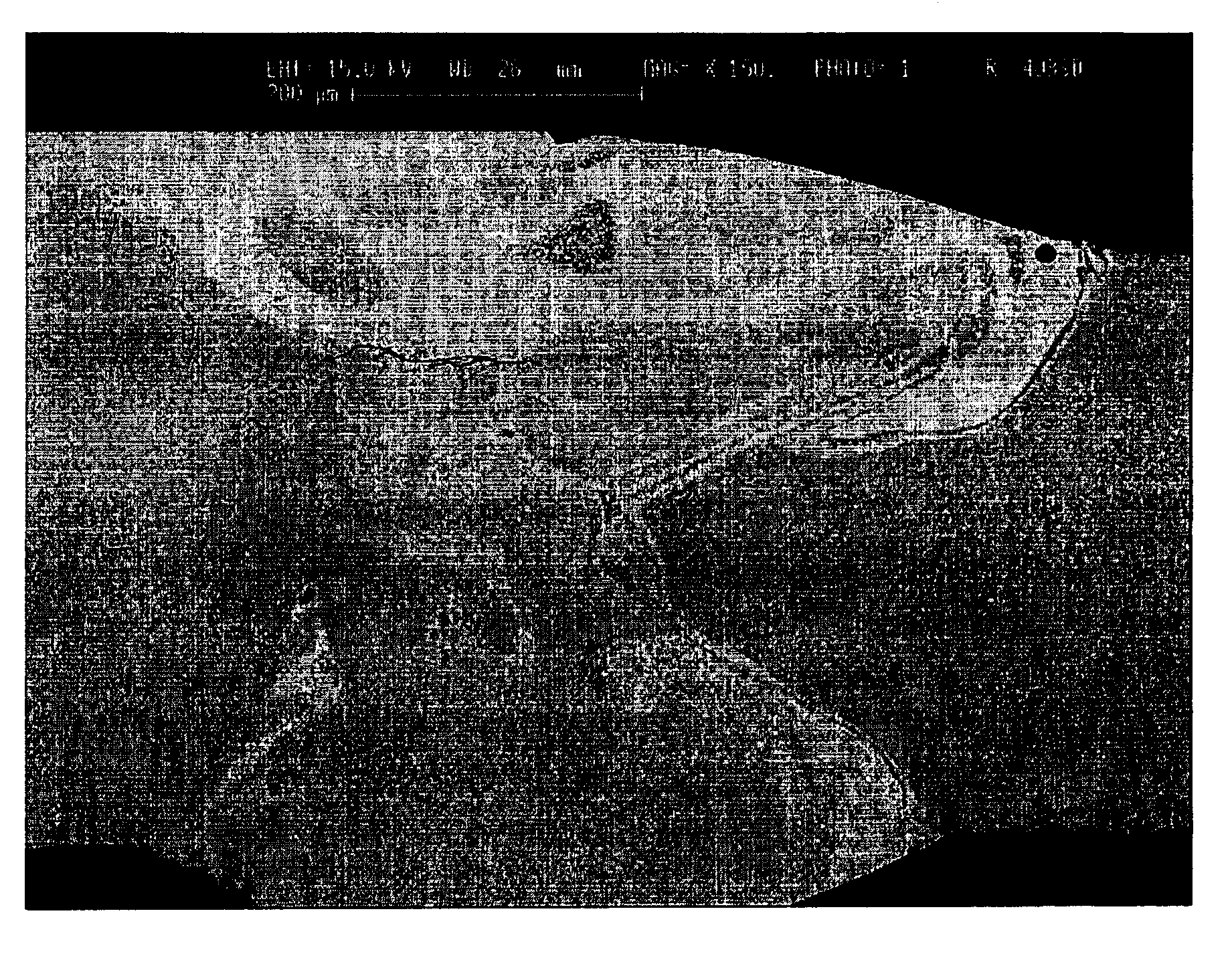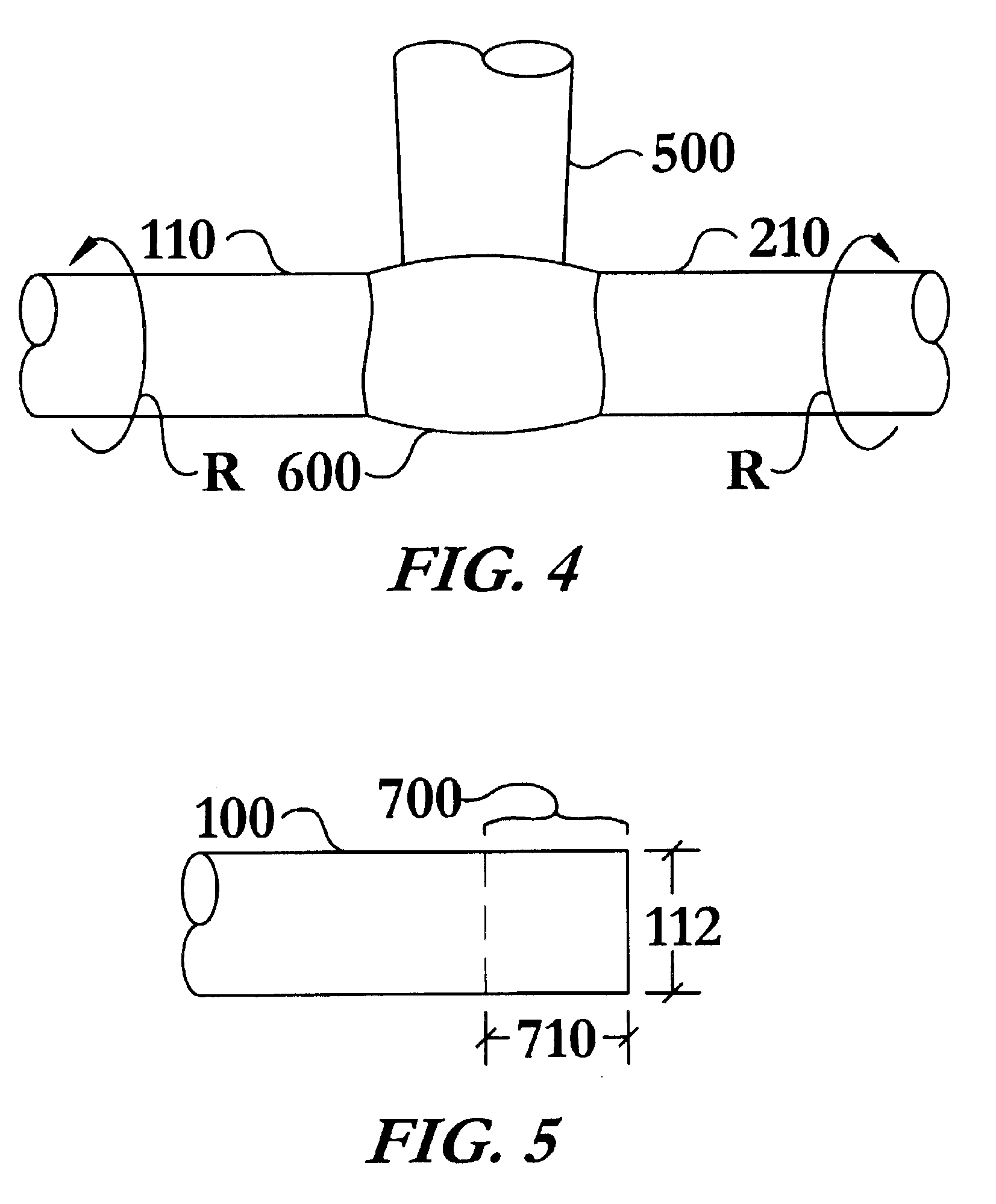Method of welding titanium and titanium based alloys to ferrous metals
a technology of titanium alloys and ferrous metals, applied in the field of material joining, can solve the problems of low risk of human tissue reaction, use of nickel-titanium alloys, and difficulty in joining this material, both to itself and to other materials, and use of nickel-titanium to the actual moving parts
- Summary
- Abstract
- Description
- Claims
- Application Information
AI Technical Summary
Benefits of technology
Problems solved by technology
Method used
Image
Examples
experiment 1
To establish baseline variability in alloy ductility, various metal alloys were subjected to arc melting and subsequent ductility testing. As a uniform procedure, all components were placed in a small H2O cooled crucible. The crucible was argon shield gas purged for 2 minutes. An arc was struck and all material was melted into a single ball. The resulting ball was then cooled in argon gas before being exposed to hammer blows to estimate the relative ductility of the material. The purpose of this experiment was to confirm observations within the art, without introducing variables associated with welding processes, as to the approximate relative ductility of various alloys of iron, nickel, titanium, and aluminum. Results are shown in Table I.
TABLE IComposition (Weight toSample #Weight %)Ductility Observation1Ni - 56%5 hits, ductile, no cracksTi - 44%2Ti - 86%3 hits, some crackingFe - 14%3.070″ Nickel-titanium WireDuctile, no cracks6Fe - 75%(Oxidized Surface)Al - 25%6 blows to open cra...
experiment 2
To approximate the joining of nickel-titanium and stainless steel, the arc melting protocol above was performed using equal (50—50) weight to weight % of nickel-titanium and stainless steel wire. Various other metals were added to examine potential changes in ductility, as shown in Table II. Various combinations of stainless steel and nickel-titanium percentage were also examined for ductility, as shown in Table III. The purpose of this experiment was to identify potential metallic additives that would improve the overall ductility, without introducing variables associated with welding processes, of various alloys of nickel-titanium and stainless steel.
TABLE IIAdditive (All baselinecompositions 50—50 weightto weight %, Nickel-Sample #titanium and Stainless steel)Ductility Observation18Ti - 10%Extremely brittle19Fe - 10%2 hits, moderately brittle20Al - 10%Extremely brittle21Ti - 20%Very brittle22Fe - 20%Very brittle23Al - 20%Very brittle24Ti - 30%Very brittle25Fe - 30%3 hits to crack...
PUM
| Property | Measurement | Unit |
|---|---|---|
| pressure | aaaaa | aaaaa |
| voltage | aaaaa | aaaaa |
| ductile | aaaaa | aaaaa |
Abstract
Description
Claims
Application Information
 Login to View More
Login to View More - R&D
- Intellectual Property
- Life Sciences
- Materials
- Tech Scout
- Unparalleled Data Quality
- Higher Quality Content
- 60% Fewer Hallucinations
Browse by: Latest US Patents, China's latest patents, Technical Efficacy Thesaurus, Application Domain, Technology Topic, Popular Technical Reports.
© 2025 PatSnap. All rights reserved.Legal|Privacy policy|Modern Slavery Act Transparency Statement|Sitemap|About US| Contact US: help@patsnap.com



